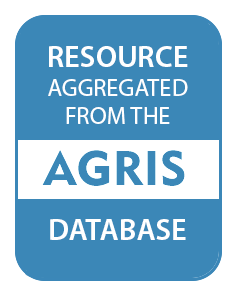What is AGRIS?
AGRIS (International System for Agricultural Science and Technology) is a global public database providing access to bibliographic information on agricultural science and technology. The database is maintained by CIARD, and its content is provided by participating institutions from all around the globe that form the network of AGRIS centers (find out more here). One of the main objectives of AGRIS is to improve the access and exchange of information serving the information-related needs of developed and developing countries on a partnership basis.
AGRIS contains over 8 million bibliographic references on agricultural research and technology & links to related data resources on the Web, like DBPedia, World Bank, Nature, FAO Fisheries and FAO Country profiles.
More specifically
AGRIS is at the same time:
A collaborative network of more than 150 institutions from 65 countries, maintained by FAO of the UN, promoting free access to agricultural information.
A multilingual bibliographic database for agricultural science, fuelled by the AGRIS network, containing records largely enhanced with AGROVOC, FAO’s multilingual thesaurus covering all areas of interest to FAO, including food, nutrition, agriculture, fisheries, forestry, environment etc.
A mash-up Web application that links the AGRIS knowledge to related Web resources using the Linked Open Data methodology to provide as much information as possible about a topic within the agricultural domain.
Opening up & enriching information on agricultural research
AGRIS’ mission is to improve the accessibility of agricultural information available on the Web by:
- Maintaining and enhancing AGRIS, a bibliographic repository for repositories related to agricultural research.
- Promoting the exchange of common standards and methodologies for bibliographic information.
- Enriching the AGRIS knowledge by linking it to other relevant resources on the Web.
AGRIS is also part of the CIARD initiative, in which CGIAR, GFAR and FAO collaborate in order to create a community for efficient knowledge sharing in agricultural research and development.
AGRIS covers the wide range of subjects related to agriculture, including forestry, animal husbandry, aquatic sciences and fisheries, human nutrition, and extension. Its content includes unique grey literature such as unpublished scientific and technical reports, theses, conference papers, government publications, and more. A growing number (around 20%) of bibliographical records have a corresponding full text document on the Web which can easily be retrieved by Google.
Members:
Resources
Displaying 3551 - 3555 of 9579Classification of Landsat images based on spectral and topographic variables for land-cover change detection in Zagros forests
Detection of land-cover changes through time can be complicated because of sensor-specific differences in spatial and spectral resolutions; classified land-cover changes can be due to either real changes on the ground or a switch in sensors used to collect data.
myth of encroachment
Scholars of pastoralism often refer to changes of pastoral land tenure as ‘encroachment.’ The New Zealand case of pastoral land tenure reform suggests that this is incorrect for several reasons. First it takes the point of view of the pastoralist, which introduces unnecessary bias. Second, it assumes that all changes in land tenure are situations in which the state, or another powerful agent, takes land away from the less powerful pastoralists.
nearest-neighbor imputation approach to mapping tree species over large areas using forest inventory plots and moderate resolution raster data
The paper describes an efficient approach for mapping multiple individual tree species over large spatial domains. The method integrates vegetation phenology derived from MODIS imagery and raster data describing relevant environmental parameters with extensive field plot data of tree species basal area to create maps of tree species abundance and distribution at a 250-m pixel size for the entire eastern contiguous United States.
Landslide susceptibility assessment in Limbe (SW Cameroon): A field calibrated seed cell and information value method
The dissected volcanic terrains around Limbe, SW Cameroon are frequently affected by small scale but destructive landslides. In this study, a raster-based data driven method involving seed cells is used to build a landslide susceptibility model for the Limbe area. Factors considered to be potential controls of slope failure within this area include slope gradient, rock type, distance from roads, slope orientation, mean annual precipitation, soil type, land cover type, stream density and distance from stream.
global land-cover validation data set, II: augmenting a stratified sampling design to estimate accuracy by region and land-cover class
A global validation database that can be used to assess the accuracy of multiple global and regional land-cover maps would yield significant cost savings and enhance comparisons of accuracy of different maps. Because the global validation database should expand over time as new validation data are contributed, the sampling design must be constructed so that it is simple to increase the sample size from a specific region (e.g. a continent or country) or from targeted land-cover classes to improve standard errors of the accuracy estimates.


